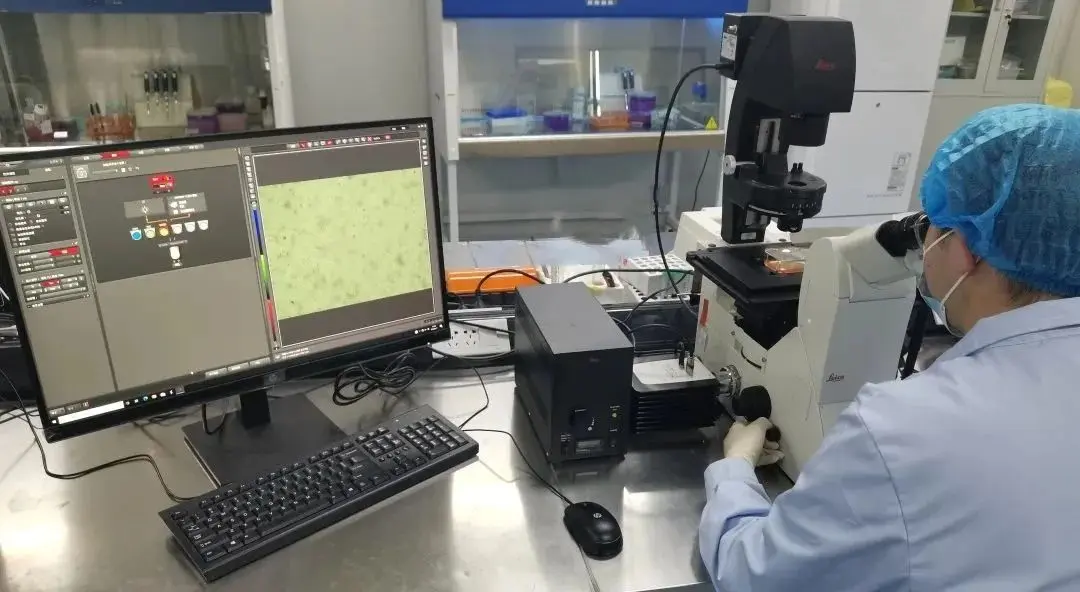
In Vitro Cytotoxicity Testing for Medical Devices
In vitro cytotoxicity testing is versatile and has advantages over in vivo testing methods, such as being simpler, faster, having fewer interferences, and avoiding ethical issues. As a routine testing item in the biological evaluation of medical devices, it is widely applicable to the evaluation of various medical devices and materials.

Why Perform Cytotoxicity Testing?
1. Assess Potential Toxicity to Human Cells: Cytotoxicity testing helps assess the potential toxicity of device materials to human cells, ensuring their safety for in vivo use.
2. Material Selection and Optimization: This test aids manufacturers in selecting the appropriate materials and optimizing designs. By testing different materials for cytotoxicity, manufacturers can choose those that have minimal impact on human cells, REDucing potential biocompatibility issues.
3. RegULatory Requirements: Cytotoxicity testing is a regulatory requirement in the biological safety evaluation of medical devices, serving as a crucial step to ensure device safety.
Reference Standards
- iso 10993-5:2009
Biological Evaluation of Medical Devices — Part 5: Tests for In Vitro Cytotoxicity
- GB/T 16886.5-2017
Biological Evaluation of Medical Devices — Part 5: in vitro cytotoxicity testing
- GB/T 14233.2-2005
Test Methods for Medical Infusion, Transfusion, and Injection Equipment — Part 2: Biological Testing Methods
- GB/T 16175-2008
Biological Evaluation Testing Methods for Medical Silicone Materials
- YY/T 0127.9-2009
Biological Evaluation of Dental Medical Devices — Unit 2: Test Methods — Cytotoxicity Testing: Agar Diffusion Method and Membrane Diffusion Method
Cytotoxicity Testing Methods
There are three primary methods for cytotoxicity testing: Extracts Method, Direct Contact Method, and Indirect Contact Method.
- Extracts Method: Suitable for detecting the toxicity of leachable substances, this method typically uses polar and non-polar serum-containing media to extract substances from the device for testing.
- Direct Contact Method: The most sensitive method for detecting the cytotoxicity of materials. It can detect even minor cytotoxic effects.
- Indirect Contact Method: Includes the Agar Diffusion Method and Membrane Diffusion Method. The agar diffusion method is ideal for screening large quantities of highly toxic materials, while the membrane diffusion method is suited for evaluating low molecular weight toxic materials.
Certain products, such as contact lenses, may already have specific cytotoxicity testing methods (e.g., agar diffusion method as per YY 0719.7-2011 for optical contact lenses and care products), and some dental products may use agar or membrane diffusion methods (per YY/T 0127.9-2009).
Selecting the appropriate method depends on the product, material, its intended use, physicocheMICal properties, and factors such as test principles, sensitivity, and quantifiability.
Impact of Sterilization Methods on Cytotoxicity Test Results
Common sterilization methods include radiation, ethylene oxide (EO) sterilization, low-temperature plasma sterilization, autoclaving, and UV sterilization. Each sterilization method can affect the results of cytotoxicity tests differently:
- Radiation Sterilization may affect biological or polymer materials in the sample, potentially influencing cytotoxic results.
- EO Sterilization can leave residual EO, which can have toxic effects on cells, inhibiting cell growth. Adequate removal of EO residues is essential.
- Low-Temperature Plasma Sterilization may leave residual gases and chemicals, potentially causing cell damage and death.
- Autoclaving may alter the properties of the product due to high temperatures, limiting its applicability in some cases.
- UV Sterilization is a simple and convenient method but primarily targets surface and airborne microorganisms, not deep or hidden bacteria, viruses, or fungi, leading to potential false-positive test results.
Do Non-Sterile Products Need Sterilization Before Cytotoxicity Testing?
Non-sterile products may contain growth factors, bacteria, fungi, or other contaminants that could affect cell growth and metabolism, leading to false-positive results. If sterilization (e.g., heat sterilization or UV exposure) does not affect the product, it is advisable to sterilize the sample to eliminate potential microbial contamination and other factors that could influence the test outcome.
Sample Extraction for Cytotoxicity Testing
- Extraction Medium: Serum-containing culture medium is preferred because it supports cell growth and can extract both polar and non-polar substances from the sample.
Other extraction media, such as pure water or saline, may only provide one type of extraction environment (either polar or non-polar), and they do not support cell growth. Thus, using such media can affect cell survival in the test.
- Extraction Conditions: Common conditions include:
- (37±1)°C, (24±2) hours
- (50±2)°C, (72±2) hours
- (70±2)°C, (24±2) hours
- (121±2)°C, (1±0.2) hours
These conditions are based on historical data and are used for assessing potential hazards in device or material risk evaluation. Other conditions (e.g., longer or shorter extraction times at 37°C) can be selected based on product contact information.
If the extraction medium is a serum-containing culture medium, the temperature must be maintained at 37°C, as higher temperatures could negatively affect the stability of the serum or other medium components.
Evaluation and Analysis of Cytotoxicity Results
Cytotoxicity can be measured using both qualitative and quantitative methods. Quantitative evaluation is generally preferred as it is more objective and less influenced by subjective factors. It involves measuring parameters such as cell count, total protein levels, enzyme release, vital dye release, or other measurable markers. The MTT assay is commonly used for quantitative cytotoxicity testing in domestic applications.
- Qualitative Evaluation: Microscopic examination of changes in cell morphology, vacuolation, detachment, cell lysis, and membrane integrity.
- Quantitative Evaluation: Measurement of cell death, growth inhibition, cell proliferation, or colony formation.
If cytotoxicity is detected, further evaluations are required, including:
1. Additional tests (e.g., serum-containing or serum-free media, altering serum concentrations).
2. Extract analysis (e.g., sterilization or residual production materials).
3. Dilution response analysis.
4. Chemical characterization of leachable substances.
With the evolving regulatory landscape for medical device registration, the biological evaluation requirements for medical devices have become more detailed. As a sensitive biocompatibility test, in vitro cytotoxicity testing is influenced by various methods and sterilization approaches. Tailoring testing protocols to the specific conditions of the product ensures accurate and applicable evaluation results.
Next, JJR LAB will continue to explore detailed topics in biological evaluation, reviewing strategies for biological risk assessment and helping clients achieve comprehensive compliance with biological safety standards.
Email:hello@jjrlab.com
Write your message here and send it to us
 WEEE Registration for Waste Electrical &Electr
WEEE Registration for Waste Electrical &Electr
 MSDS Chemical Safety Testing
MSDS Chemical Safety Testing
 What Are the Differences Between UK REACH and EU R
What Are the Differences Between UK REACH and EU R
 E-Cigarette GB 41700 Compliance Testing
E-Cigarette GB 41700 Compliance Testing
 What Are the Testing Items of California Propositi
What Are the Testing Items of California Propositi
 E-Cigarette EU TPD Testing
E-Cigarette EU TPD Testing
 Testing Certification for E-cigarettes Exported to
Testing Certification for E-cigarettes Exported to
 What is Amazon US CPC Certification?
What is Amazon US CPC Certification?
Leave us a message
24-hour online customer service at any time to respond, so that you worry!




